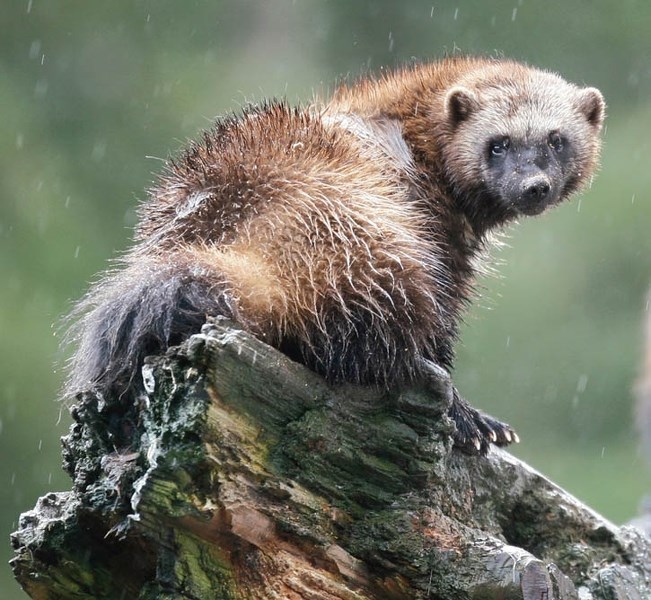Wolverines are regarded as symbols of wilderness, yet little is known about this secretive species.
The Committee on the Status of Endangered Wildlife in Canada (COSEWIC) has assessed the wolverine as special concern due to increasing industrial activity and greater access to its remote habitats because of new roads and more snowmobiles.
Although often subjected to high levels of hunting and trapping, scientists say the elusive carnivore receives little attention and monitoring and, as a result, there is a poor understanding of how wolverine populations are faring under climate change and development.
They say the species has a low reproductive rate, is sensitive to human disturbance, especially when denning, requires vast secure areas to maintain viable populations, and may not be able to recover from declines or re-populate vacant habitats.
“Wolverines do not receive the monitoring attention they need, considering the changes that are occurring throughout their range and the fact they reproduce slowly,” said Justina Ray, a COSEWIC scientist.
“Increased access to formerly remote regions of northern Canada through industrial development, combined with increasingly sophisticated snowmobile technology, are chief concerns for wolverines in the future, not to mention a changing climate.”
Wolverines in the United States are on the verge of being listed as threatened due to dangerously low numbers. There are said to be as few as 35 breeding wolverines remaining in the contiguous U.S.
In Canada, they used to be one of the most widely distributed animals, with a range that covered all three territories, all of Western Canada, the Prairies, Ontario, Quebec, Labrador and New Brunswick.
COSEWIC has concluded this wide-ranging animal has an estimated Canadian population not likely exceeding 10,000 mature individuals, and suspect’s wolverines may have been extirpated from Vancouver Island.
Although population increases appear to be occurring in parts of the Northwest Territories, Nunavut, Manitoba and Ontario, declines have been reported in British Columbia, and populations in a large part of the range in Quebec and Labrador have not recovered.
“Population estimates are very limited, and trends are not known,” said Ray, who is executive director of the Wildlife Conservation Society of Canada.
“Most data are limited to harvest records, and harvest levels may be under-reported because many pelts used domestically are not included in official statistics. There is no evidence, however, of a decline in harvest over the last three generations.”
Locally, Bow Valley scientist Tony Clevenger has been trying to bring the plight of wolverines to greater attention though his three-year study in Banff, Yoho and Kootenay national parks.
Hair samples of wolverines collected over a three-year period for DNA analysis identified 64 individual animals in the parks – 25 females and 39 males – though that is not a population estimate.
Clevenger said the research, when compared to similar surveys in Kananaskis Country where wolverine detection was low, suggests the population in the national parks is relatively healthy, stable and of regional conservation importance.
He said his research was unable to show that the Banff-Yoho-Kootenay population is a source for neighbouring local populations outside of the national parks, but would like to be able to examine if that is true or not.
“We’ve found this is an important population from a conservation standpoint,” said Clevenger in a recent interview. “We know parks aren’t large enough by themselves to maintain wolverines.”
Clevenger and his team have done some surveys from Highway 3 in southern Alberta south to the U.S border, including in Waterton Lakes, and it is hoped more work will be done in an area north of Highway 3 to Kananaskis Country.
“To understand them, you really have to study them at a wolverine scale, which is a really large area,” he said.
Clevenger also said there has been limited use of crossing structures on the Trans-Canada Highway by wolverines in the last 17 years. In fact, there’s only been about 10 recorded crossings, though there was a high profile crossing of a wolverines of an overpass in 2011.
“Monitoring of new wildlife crossings along Phase 3B is essential in order to provide a better understanding of how wolverines respond to wildlife crossing design types and whether mitigation is effective at allowing movements across the Trans-Canada Highway,” he said.




